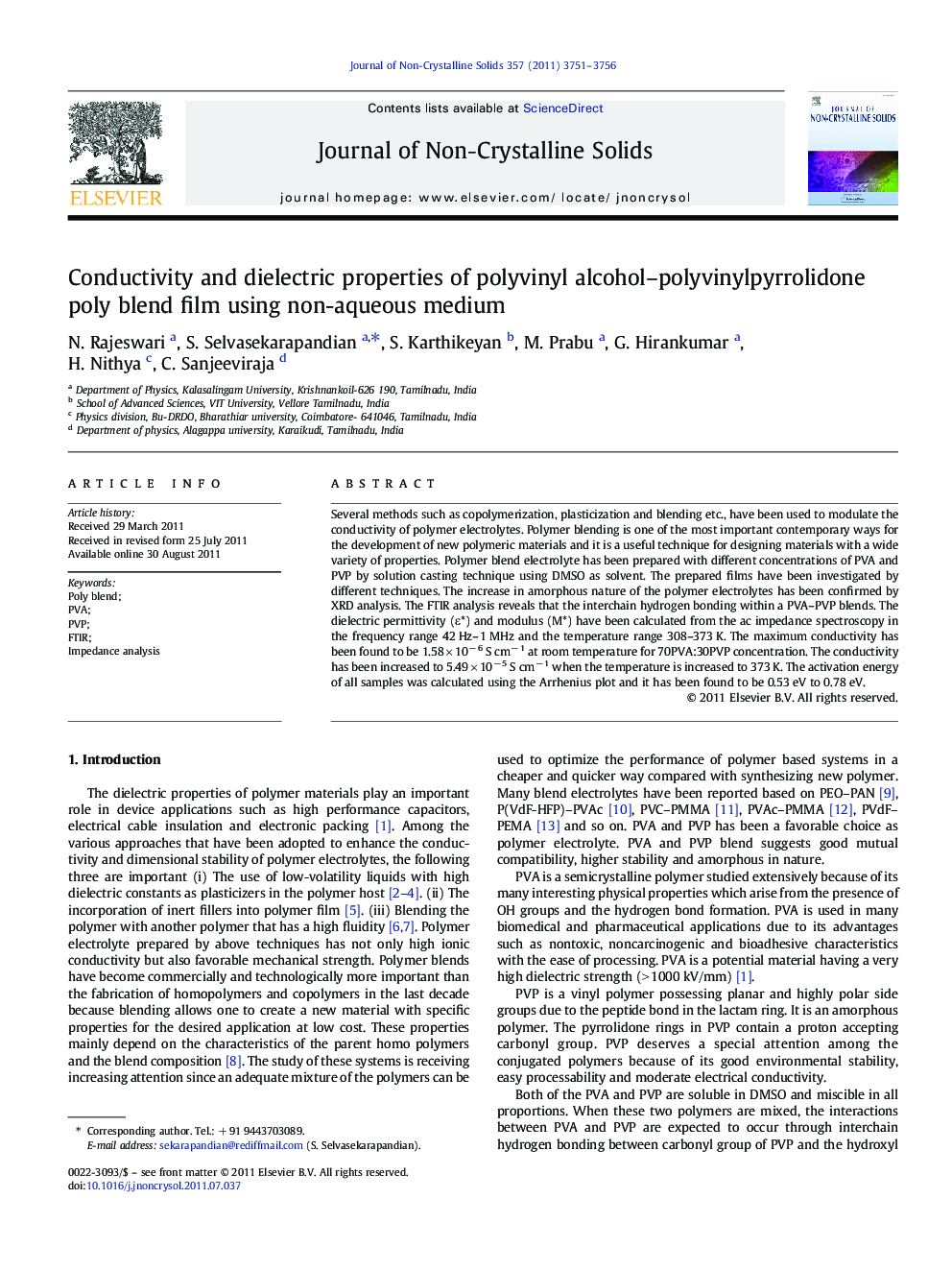| Article ID | Journal | Published Year | Pages | File Type |
|---|---|---|---|---|
| 1482584 | Journal of Non-Crystalline Solids | 2011 | 6 Pages |
Several methods such as copolymerization, plasticization and blending etc., have been used to modulate the conductivity of polymer electrolytes. Polymer blending is one of the most important contemporary ways for the development of new polymeric materials and it is a useful technique for designing materials with a wide variety of properties. Polymer blend electrolyte has been prepared with different concentrations of PVA and PVP by solution casting technique using DMSO as solvent. The prepared films have been investigated by different techniques. The increase in amorphous nature of the polymer electrolytes has been confirmed by XRD analysis. The FTIR analysis reveals that the interchain hydrogen bonding within a PVA–PVP blends. The dielectric permittivity (ε*) and modulus (M*) have been calculated from the ac impedance spectroscopy in the frequency range 42 Hz– 1 MHz and the temperature range 308–373 K. The maximum conductivity has been found to be 1.58 × 10− 6 S cm− 1 at room temperature for 70PVA:30PVP concentration. The conductivity has been increased to 5.49 × 10− 5 S cm− 1 when the temperature is increased to 373 K. The activation energy of all samples was calculated using the Arrhenius plot and it has been found to be 0.53 eV to 0.78 eV.
► Bio degradable polymer has good mechanical strength and it is necessary for proton exchange membrane fuel cell. ► One among the biodegradable polymer is PVA and PVP blend having good mechanical strength. ► The high conductivity has been observed for the composition of 70PVA:30PVP blend without any dopend.
